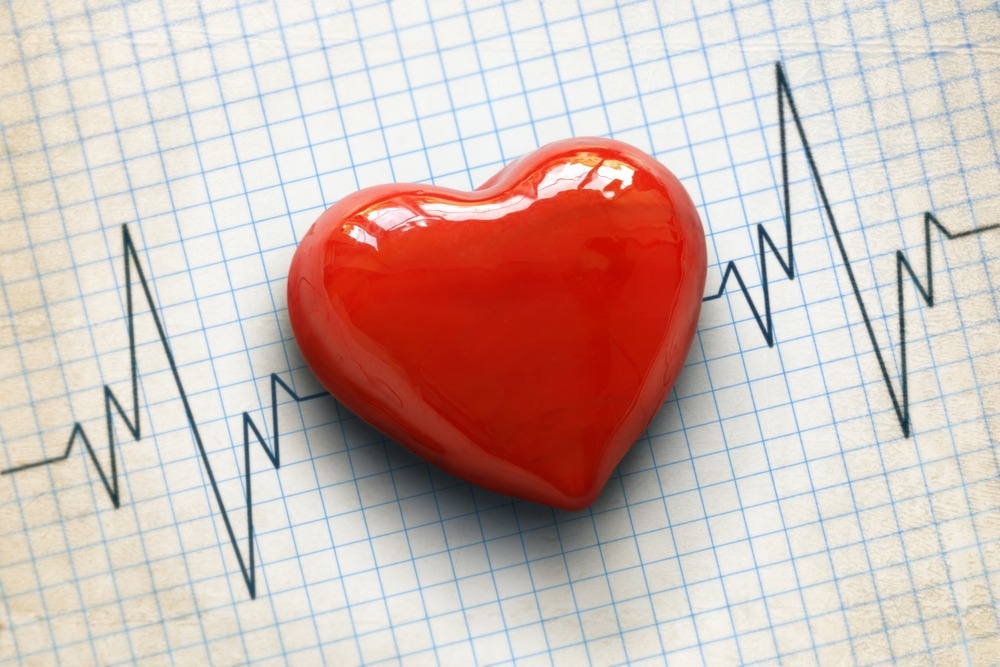According to the World Health Organization (WHO), one of the prominent causes of mortality and morbidity is different types of cardiovascular diseases (CVDs). However, frequent monitoring and timely diagnosis could enable early detection and improved prognosis.

Study: Advances in nanosensors for cardiovascular diseases detection. Image Credit: Brian A Jackson/Shutterstock.com
Several nanosensors have been designed for the accurate and quick diagnosis of CVDs. Recently, scientists have presented a review study highlighting the application and design of nanosensors in the detection of CVDs. This review is available as a pre-proof in Life Sciences.
Cardiovascular Diseases and their Detection Methods
Arteries are blood vessels that supply blood to the heart. When arteries become narrow or hard, it prevents regular blood flow to the heart or brain and, thereby, causes an array of CVDs, including atherosclerosis (AS), stroke, ischemic heart disease, hypertension, heart failure, and cardiomyopathy.
Over the years, scientists have developed several diagnostic methods, e.g., electrocardiogram (ECG) detection, blood pressure measurement, magnetic resonance imaging (MRI), and computed tomography (CT), to detect CVDs. Scientists have stated that it is important to create novel sensing techniques for the early detection of CVDs.
Some of the common biomarkers that could be used for the early diagnosis of CVDs are cardiac troponin, tumor necrosis factor-alpha, myoglobin (Myo), and C-reactive protein (CRP). Accurate detection and quantification of these biomarkers have been associated with early diagnosis and understanding of disease pathophysiology.
Nanotechnology and Cardiovascular Diseases
Nanotechnology has been extensively applied for the treatment and detection of various diseases. Nanomaterials contain many unique properties, such as optical, electrical, thermal, chemical, biological, etc., which are used to develop numerous nanosensors. These nanosensors exhibit extraordinary photostability, high sensitivity, and desirable biocompatibility.
Scientists designed pressure, electrochemical, optical, and paper-based nanosensors for the detection of biomarkers or significant parameters of CVDs. Some of these nanosensors used for the diagnosis of CVDs are discussed below.
Electrochemical Nanosensors
The incorporation of specific nanomaterials onto electrodes enhanced the electrochemical sensing performance. Researchers have created sensitive electrochemical nanosensors by drop-casting of colloidal nanomaterials onto electrodes. Some of the nanomaterials used for the development of electrochemical nanosensors are titanium dioxide (TiO2), gold (Au), graphene oxide (GO), etc.
One of the nanosensors used for detecting cardiac regulatory functions is TiO2 nanoparticles coated on a bare gold electrode (GE). This nanosensor can adsorb the phosphopeptides with cardiac regulatory functions. Scientists stated that instead of single nanomaterials, composite nanomaterials exhibit greater sensitivity and accuracy for detecting biomarkers or specific parameters associated with CVDs. For instance, for the analysis of cardiac troponin I (cTnI) in clinical samples, a composite nanomaterial, comprising trimetallic hollow CuPtRh cubic nanobox (CNB) and ammoniated MXene (NH2-Ti3C2), has been developed. This nanocomposite offers more active sites and can efficiently detect cTnI.
Polydimethylsiloxane (PDMS) is a flexible material that acts as a substrate for carbon nanotube (CNT) films. Scientists developed nanosensors’ electrodes by embedding Au nanostructures (nano-Au) onto CNTs/PDMS films. The newly developed nano-Au/CNTs/PDMS-based nanosensor can detect hydrogen peroxide (H2O2) released from cells. The presence of H2O2 indicates cellular oxidative signaling, a significant factor that indicates the progression of CVDs.
Optical Nanosensors
Optical nanosensors are composed of nanomaterials with optical properties. For instance, fluorescent nanomaterials are used to detect cysteine (Cys), an indicator of oxidative stress that signals the possibility of CVDs. Near-infrared (NIR) Quantum Dots (QDs) are used for long-term cell imaging owing to their narrow emission band, good photostability, and distinct broad absorbance.
Scientists have created a nanosensor by coating porous hydrogels containing photonic crystals (PhCs) cores with antibodies to detect and differentiate between B-type natriuretic peptide (BNP), cTnI, and Myo. Colorimetric nanosensors are used to detect trimethylamine N-oxide, an indicator of CVDs.
Pressure Nanosensors
Pressure nanosensors are composed of nanomaterials that can detect and convert pressure changes into electrical signals, i.e., into a readable format. A pressure nanosensor operates in the range of nano to micro-Watt, which helps in the continual monitoring of cardiovascular parameters, such as blood pressure (BP), heart rate variability (HRV), and heart rate (HR). Soft strain sensors attached to the epicardial surface are used to monitor changes in pressure due to myocardium deformation.
Researchers have developed a self-powered pressure sensor using nanowires array plasma deposited on the surface of polytetrafluoroethylene matrix. This nanosensor exhibited a higher sensitivity to external subtle mechanical excitation. Thereby, it is used to detect minor changes in blood pressure.
Paper-Based Nanosensors
Paper-based nanosensors are used for low-cost, portable, and rapid detection of analytes of interest. Scientists have created an electrochemical paper-based nanosensor, using phosphocholine-modified electrodes containing specific antibodies, to simultaneously detect procalcitonin, CRP, and cTnI in serum samples.
A microfluidic paper-based nanosensor has been designed to detect cholesterol. Colorimetric paper-based nanosensors are based on chromogenic reactions that can detect glucose, cholesterol, and triglycerides from the blood samples.
Reference
Tang, X. et al. (2022) Advances in nanosensors for cardiovascular diseases detection. Life Sciences. https://www.sciencedirect.com/science/article/pii/S0024320522004337?via%3Dihub
Disclaimer: The views expressed here are those of the author expressed in their private capacity and do not necessarily represent the views of AZoM.com Limited T/A AZoNetwork the owner and operator of this website. This disclaimer forms part of the Terms and conditions of use of this website.